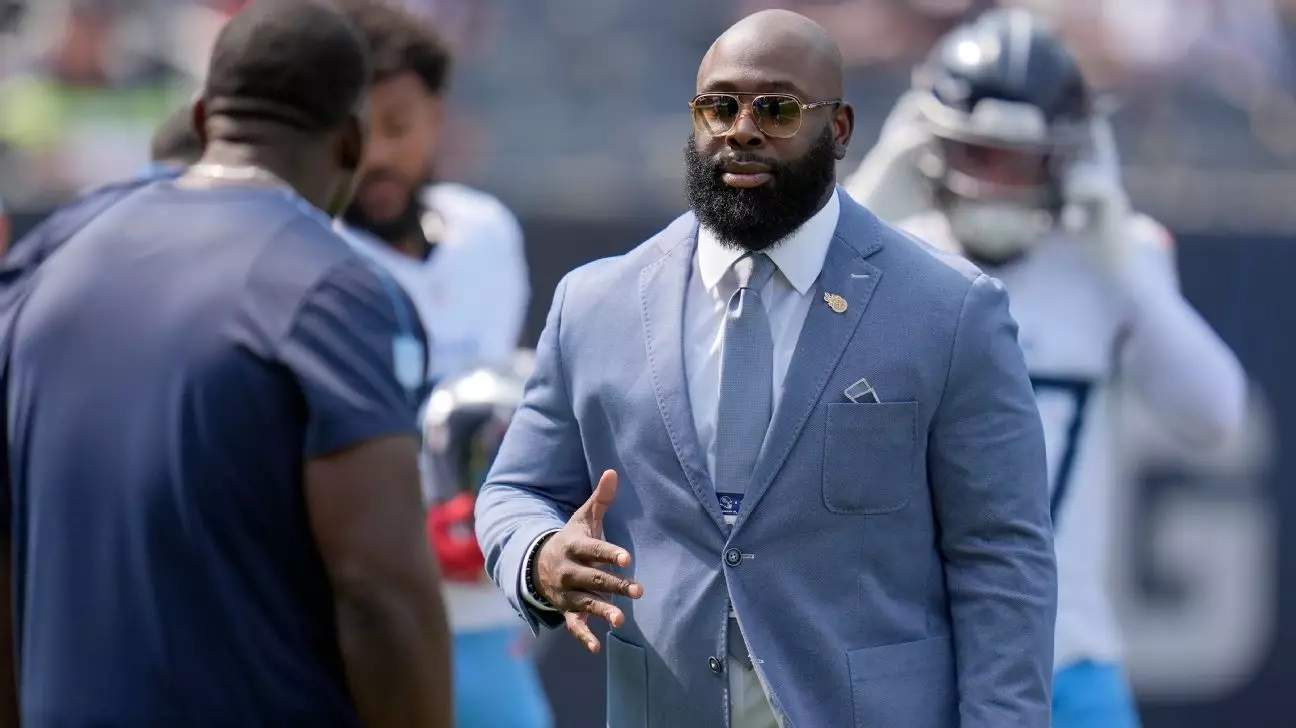In a move reflecting the urgency of improvement, the Tennessee Titans terminated general manager Ran Carthon following a dismal 3-14 season, marking a significant low point in the organization’s recent history. This decision signals a recalibration within the franchise, as it aims to recover from a progressively worsening performance on the field. In addressing the media, controlling owner Amy Adams Strunk expressed her profound disappointment with the team’s record, stating, “It’s impossible to ignore that our football team hasn’t improved over the past two years.” The Titans now embark on a critical journey to redefine their leadership structure and team dynamics, particularly as they prepare for the upcoming draft where they will hold the coveted number one pick in 2025.
The Titans have chosen to retain Brian Callahan as head coach despite the disastrous performance under his leadership. This indicates a commitment to continuity in coaching, while simultaneously sending a clear message that the front office structure will undergo significant changes. Chad Brinker, who serves as president of football operations, is charged with spearheading the search for the next general manager. His assertion that the ideal candidate will be an experienced scout and evaluator indicates a strategic focus on rebuilding the draft process, which has been a cornerstone of successful franchises throughout the NFL. Brinker’s emphasis on finding someone who can contribute expertise in college player evaluation highlights a fundamental shift towards fostering a more integrated and harmonized decision-making process within the organization.
The Titans’ leadership structure has also undergone a notable shift with the stipulation that Brinker will maintain final authority over roster decisions. This decision is particularly interesting as it delineates the boundaries of responsibility within the organization and ensures a hierarchy that aims to promote efficacy and clarity in operations. Burke Nihill, the team’s president and CEO, underscored this need for structure, indicating that the new general manager would still carry significant oversight responsibilities. This delineated power dynamic could foster a more collaborative environment, allowing both the head coach and general manager to work effectively under Brinker’s leadership.
Nihill’s comments suggest a learning curve from past experiences, notably the hiring of Carthon. When Carthon was brought into the fold, the expectations and structure surrounding the general manager role were markedly different. The Titans’ management, now attuned to the intricacies of their organizational needs, appears determined to redefine the role in a way that aligns closely with the head coach’s vision, creating a more synchronized approach to talent acquisition and development.
The road ahead for the Titans promises to be demanding but potentially fruitful, especially with the number one overall pick in the 2025 draft on the horizon. This prospect has prompted external figures such as college football coach Deion Sanders to take notice, sharing their reactions publicly, which adds an additional layer of intrigue. The Titans not only have the opportunity to reshape their roster but also the chance to establish a new identity that can reinvigorate the fan base and restore competitiveness.
As the organization moves forward, the emphasis on creating a supportive framework that emphasizes player development will be crucial. The Titans must ensure that they select a general manager who is not only adept at evaluating talent but also someone who can work in tandem with Callahan to foster an environment conducive to growth. This crucial collaboration will determine how efficiently the organization can pivot from its current trajectory and toward a more promising future.
Carthon’s firing serves as a reminder of the larger trends within the NFL, where organizations increasingly prioritize accountability and results-driven decisions. As franchises grapple with the pressures of performance and the expectations of their fan bases, the Titans find themselves at a crossroads. Their approach to this transition will undoubtedly reflect broader league dynamics and the increasing importance of cohesive teamwork among football operations and coaching staff.
The Tennessee Titans’ decision to reorganize their leadership comes at a pivotal moment for the franchise. With a clear intention to fortify their operational framework, coupled with a strategic focus on talent evaluation and roster management, the Titans are laying the groundwork for a potential revival. The coming months will be critical as they work to establish a foundation that can support sustainable success moving forward.


Leave a Reply